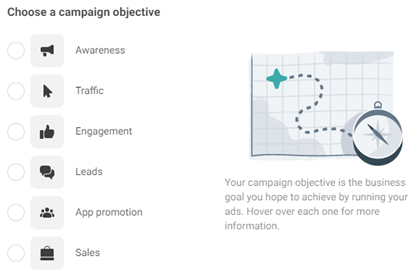Before Facebook Ads introduced its ad platform, brands had to rely on growing their social following organically.
In 2022, Facebook (and its sister platform, Instagram) has become a pay-to-play market. You may be struggling to reach a wider audience without paying for visibility via ads.
Whether you’re starting a new company or are a well-established brand, you may need to consider paying for engagement through social platforms.
But how do you know when it’s worth the spend?
New Brands & Facebook Engagement
Every company must start somewhere with social media. If you’re a new brand, you may be under pressure to grow – and quickly.
How do you do that without a following?
You may hope to create viral-worthy content, but relying on this tactic alone for growth is not realistic for most.
We now know that organic engagement for page posts can range anywhere from 0.05% to 0.29%, according to We Are Social. With those abysmally low rates, you’re going to be hard-pressed to get eyes on your social content even with a large following.
So, when is it worth paying for engagement?
A few examples of why you should pay for engagement include:
- To build a new audience and following quickly.
- Amplifying content among your existing audience (if any at all).
- You want to have the ability to create remarketing strategies from Engagement.
If you have the budget available, paying for engagement can be a cost-effective way to gain awareness instead of choosing the “Sales” or “Traffic” objectives.
Is your marketing budget too tight right now? You do have free options available.
Facebook has an “Invite to Follow” feature for pages. This is a free way to get additional page engagement.
The Invite to Follow feature does come with limitations, however.
One of the downsides is that you are only able to invite 200 friends per day. This means you have to choose personal friends to like the page, and they may not be your target audience.
This tactic probably isn’t relevant for brands wanting to reach the national level instead of small-to-medium-sized businesses.
Existing Brands & Facebook Engagement
Think you don’t have to pay for exposure if your brand already has a large following?
Think again.
As mentioned earlier in this article, organic reach to existing followers is minimal. What does that mean?
Your followers that you worked so hard to gain are likely not seeing your content!
For well-established brands, your reasons for paying for engagement may differ from up-and-coming brands. Some of these reasons may include:
- Expanding your organic reach.
- Exposing your posts to your audiences’ extended network.
- Teaching or inspiring your audience.
Facebook users are not looking for sales pitches everywhere they turn. However, this is sadly the case for many individuals.
By focusing less on capturing the end sale of a user, you will already stand out from your competitors.
Showing that you have a consistent presence on social media platforms allows your audience to relate to you. The more users relate to brands, the more loyal they are to them.
Choosing The Engagement Objective
Now that you know why paid Facebook engagement is important, let’s dig into how to set up engagement campaigns.
Facebook has recently simplified its campaign objectives.
If you’re looking to build a following and social media strategy, choosing the “Engagement” objective may be worth it.
 Screenshot taken by author, February 2022
Screenshot taken by author, February 2022Now, the campaign objective is only one piece of the puzzle. What’s more important is the content you are creating and amplifying.
In past experience, video content typically has lower costs per engagement, compared to static images or clickable links.
Why is that?
If you take a step back and think about where you’re reaching users, they are on a social media platform. They are there to engage with content from their friends, family, and brands.
Facebook does not like users to abandon their platform. Typically, standard static content with clickable links does just that – meaning Facebook is going to charge a premium for that type of content.
No wonder your promotional-only posts aren’t working for you!
By focusing on what truly matters to your users, whether it be a useful tip or tool or the mission behind your brand, try to focus on video-form content for the lowest cost per engagement.
Paid Facebook Engagement Strategies
We now know what type of content is the least expensive, so let’s take a look at a few ways to get you the most engagement for your budget.
1. Start With A Broad Audience
You may be prone to target who you think is your target audience right away. Narrowed audiences typically have higher costs associated with them, however.
By starting with a broad audience, you can then narrow down your audience based on the engagement metrics of your ads.
2. Create Remarketing Audiences
The beauty of engagement ads is that you can segment users further based on how they engage with you.
For example, your first campaign is targeting a broad audience with a video ad. From there, you can create remarketing audiences on engagement such as:
- Percentage of video watched.
- Likes, comments, shares, saves.
This engagement tactic will allow you to reach a wide audience at scale, and then reintroduce engaged users to your brand in a cost-effective way.
3. Don’t Use Promotional-Only Posts
If you’re starting with a cold audience, do not spam them with promotional posts.
They don’t know enough about you or your products to want to click on your ads, let alone make a purchase!
Instead, save promotional posts for your loyal customers or a warm remarketing audience.
Additionally, keep promotions to a minimum if you’re able. If your only competitive point is your pricing, you may end up devaluing your brand unintentionally.
Unpaid Engagement Tactics
At some point, your brand will likely dabble into paid engagement ads. However, there are many ways that you can engage with your Facebook audience that does not come in the form of ads.
Some of these non-paid tactics can include:
- Responding to users in comments or direct messages (DMs).
- Asking questions in your posts to encourage engagement.
- Keeping posts short and sweet.
- Posting interesting, relevant content consistently.
Summary
Social media, particularly Facebook, is now pay-to-play. There’s no getting around that.
The rules behind Facebook organic posting and advertising have changed tenfold from when it was first established.
No matter what stage your brand is in, it’s vital to stay up-to-date on the strategies and tactics that can complement your organic efforts.
Create a paid and organic social media strategy that makes sense for your brand. Create content that is realistic and relatable to your audience.
Most importantly, be consistent in your efforts, and you’ll see the amplified efforts in your long-term brand building.
More Resources:
- 12 Facebook Ads Features Every Marketer Should Know
- Here’s How Meta Is Changing Facebook Ads Targeting For 2022
- How to Advertise on Facebook: A Beginner’s Guide
Featured Image: Sasha Ka/Shutterstock





